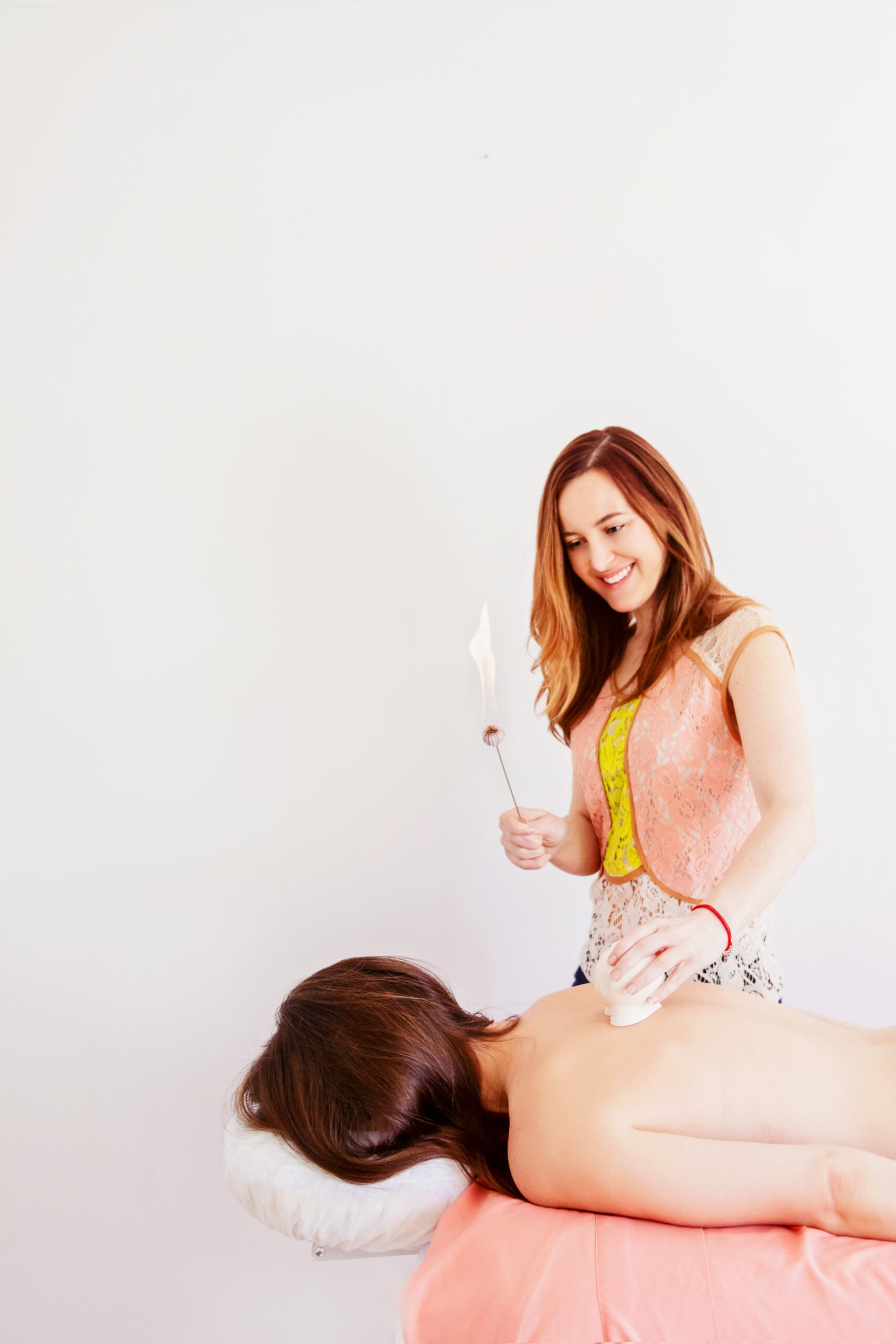What is Cupping?

Cupping, Photo by Maritere Rice
Cupping is an ancient healing modality that dates back millennia, and it is a key healing tool in Traditional Chinese Medicine. Cupping is a technique that uses plastic, ceramic, or class cups to create suction on the skin, thereby lifting the muscle and fascia to help increase blood circulation, release tension in tight muscles, and detoxify the body.
By now, most of us are familiar with the dark circular cupping marks left on the skin thanks to Olympic athletes, such as Michael Phelps. Although commonly believed to be bruises, the dark marks are not bruises, but petechia. Basically, the same thing as hickeys: perfectly circular (or heart-shaped, if you’re extra fancy) hickeys. the darker the marks, the more blood stagnation there is in that area. Stagnation of blood is a result of tense, overworked, and fatigued muscles, and whenever there is blood stasis, there is sure to be pain.
So, by using cupping to release the tension and allow fresh, oxygenated blood flow to the area, the muscles are able to recoup more quickly. That’s why this therapy is so well-received and used by top athletes. The results are nearly always immediate. After cupping, the patient feels much more relaxed, with less tension and pain. The cupping marks last about 2-5 days, depending on how dark they are. The darker the marks, the longer they are to fade.
As a practitioner who performs cupping, it is clear to see when the muscle begins to heal. After several cupping therapy sessions, the area that once produced dark marks will, over time, likely fade with each subsequent treatment. This is a great sign, depicting that healthy blood flow is getting to the area. This also helps people with chronic headaches as many times there is inadequate blood flow to the head, as the neck and should muscles are so tense.
Cupping can also be used for respiratory conditions, such as chronic asthma, cough and chest congestion, as it helps relax the muscles and help break up phlegm in the lungs, while detoxifying the body of the pathogen. When one of my own children (ages 5 & 9) are beginning to come down with a cold, fever, or flu, the first thing I do is do a cupping treatment to their neck and upper back, over their lungs. This area will be much darker than normal from the cupping therapy, as opposed to when they are healthy. While cupping the area, this helps vent out the pathogen that is affecting their respiratory system.
One of my favorite ways to use cupping is for facial rejuvenation. For this method, smaller glass cups are used with a skin-hydrating anti-aging serum (my favorite is Luna No. 1 from Wild Grace Apothecary). The cups are applied to the face with light suction, and gently stroked upward. This has several benefits:
· Brings healthy blood flow and circulation to the face
· Soothes lines and wrinkles
· Helps lift sagging skin
· Awakens the muscles of the face to allow for greater definition
· Helps drain the lymph and swelling, especially around the eyes
Facial cupping is also used for sinus congestion, TMJ, facial pain, and Bell’s Palsy (a condition which causes one-sided facial paralysis).
Cupping has also been re-termed “Myofascial Release” by healthcare practitioners who have adopted cupping therapy into their own practice. It is important to go to a practitioner who has received appropriate training to administer this type of therapy, as there are adverse effects that could result, including blisters, burns, and potential infection. Licensed Acupuncturists are well-trained in cupping therapy, as it was part of their 4-year Master’s Degree of East Asian Medicine; however, not all Licensed Acupuncturists administer cupping therapy. Use significant discretion when looking for a practitioner for facial cupping, such as a Licensed Acupuncturist with advanced certification in Cosmetic Acupuncture.
✦
✦
© 2023 Phoenix Rising Integrative Medicine | Branding by Mighty Within, Web Design by Cara Collins Design